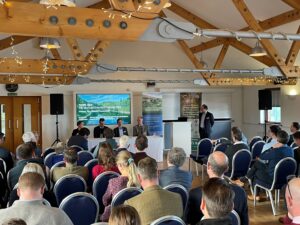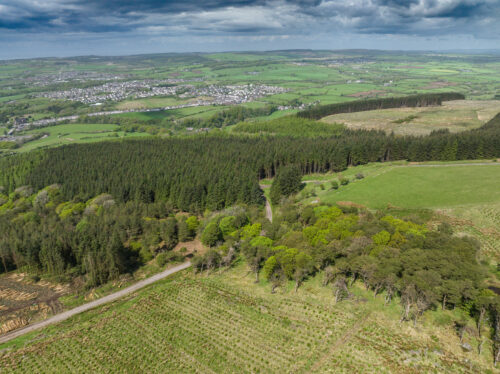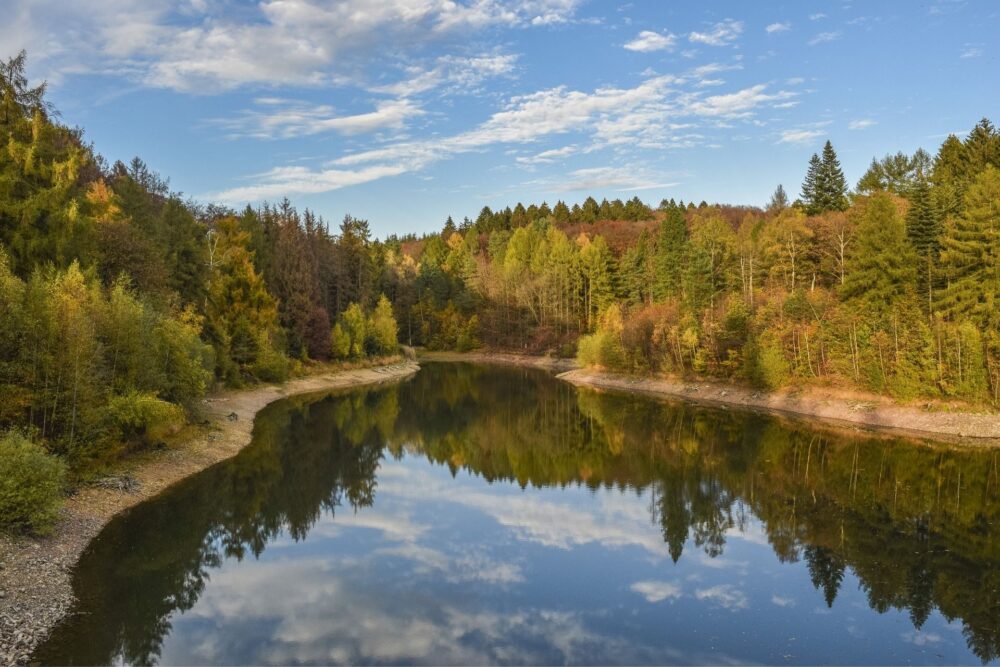Increasing demand for timber assets driven by net zero ambitions contributed to rising prices in a market characterised by fewer, smaller, but higher value sales in 2022 as Scotland “spearheaded the charge for economic forestry” with an 84% share of UK commercial forestry sales.
Meanwhile, the land available for natural capital projects including native afforestation, peatland restoration and rewilding also trebled over the past year, a sector led by England.
The UK Forest Market Report 2022, the most comprehensive review of the market, has been produced by Tilhill – the UK’s leading woodland creation, forest management and timber harvesting company – and specialist forestry firm Goldcrest Land & Forestry Group.
The report estimated the market was worth well over £200m – taking into account a considerable number of off-market sales on top of the £195m monitored by the two firms – and continues to offer an exceptional outlook for investors.
Greater awareness of the benefits of broader natural capital increased interest in opportunities offering wetland, islands and other diversity, said the report.
The focus on nature-based solutions beyond timber revealed far more land suitable for these projects, swelling to £80.7m (from £26.4m in 2021) based on the data monitored. England accounted for the largest market share with £32.4m of listings for 2,500ha of total land area, followed by Wales (£28.9m for 2,100ha) and Scotland (£19.5m across 2,300ha). These listings averaged, per gross hectare, £13,200 in England and £13,600 in Wales and £8,500 in Scotland.
The report said the incentive to protect and replenish natural capital stocks and the appetite for natural services from carbon removal to biodiversity net gain meant forestry and afforestation offered the “ideal entry points for investors looking to enter the land-based sustainable investment space”.
Meanwhile, limited supply and the sale of a handful of premium forests in the south of Scotland saw the average value of commercial forestry rise by an estimated 15% over the year. However, the report noted that there were some outstanding “outliers” that achieved sale prices well above this curve.

The first of two UK Forest Market Report launch events at the WWT London Wetland Centre.
In the report, Xander Mahony, Head of Forestry Investment at Tilhill, said:
“Commercial forestry values continue to be driven by increasing demand from institutional investors facing constrained supply. This year in particular has seen supply at the bottom end of the historical range.”
He said yield class was the biggest indicator of per hectare values, demonstrating a market that was willing to pay a premium for the best assets.
The mixed woodland market – driven by amenity and desirability over economics – grew by 81% in value from £10.7m to £19.4m and in size by 760 acres, with increasing demand outstripping supply.
The report found planting land transactions rose by almost a quarter (23%) from £53.1m to £65.3m with an average cost of £16,475 per plantable hectare, up 50% on last year’s £11,000. Scotland led the way with 85% of the value of plantable land sold north of the border as well as a 73% increase in average price to £17,200 per hectare. Again however, a few unique outliers skewed the numbers higher compared to previous years, but the trajectory was still upwards.
The total land planted in the UK rose by 4% (13,850ha) with broadleaves overtaking conifers for the first time since 2016. 76% of all new planting – and 93% of total conifer planting – took place in Scotland although at 10,480ha it was still below annual planting targets of 12,000ha.
Fenning Welstead, Partner of Goldcrest Land & Forestry Group, said there needed to be major changes in the generation and use of energy and sourcing raw materials.
“To date we have been tinkering around the edges. A future with much greater emphasis on renewable energy and raw materials will surely have to rely more on trees. Whatever the vicissitudes along the way the future of human activity will need more timber. We must keep planting.”
Timber was subject to mixed fortunes in 2022, impacted by factors from constrained global supply due to the war in Ukraine and an over-supply of logs in the UK after Storm Arwen forced harvests, to sharp increases in energy demand.
However, while the market saw major falls in the price of standing timber, this came after previously steep price inflation and values now equated to those seen just three or four years ago. Long term demand for timber remained healthy, despite current challenges.
The UK Forest Market Report 2022
Visit the official UK Forest Market Report page




